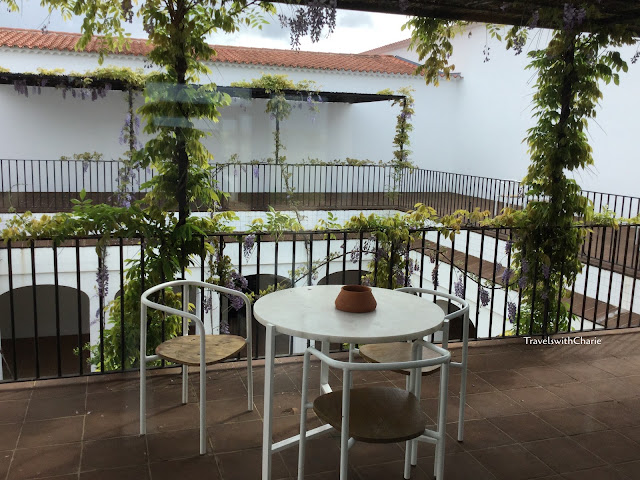The Alentejo wine region is situated east of the Tagus river and north of the Algarve region in southern Portugal. The vineyards have been here before the Roman era. After the phylloxera epidemic ravaged the vines followed by two world wars, the vintners in the region were encouraged to grow wheat and grain instead of grape vines so as to provide food for a nation gripped by an economic crisis. But slowly viticulture was restored toward the end of the 1940s. Today, there are over 250 wine producers in the Alentejo region and one of them is Herdade do Esporão.
About 73 vintners participate in the wine tourism program of the Alentejo region and are open for tours and wine tasting. Check the Alentejo wine route at vinhosdoalentejo.pt for more information.
Herdade de Esporão is near Reguengos do Monsaraz, about 105 miles (170 km) from Lisbon.
 |
| The vineyards of Esporão grow about 40 grape varieties and 4 types of olives. Esporão also owns vineyards in other parts of Portugal including the Douro Valley. |
Barrel Tunnel and Cellars
The tunnel is 15 meters wide and extends 12 meters deep belowground. It stores 1500 barrels made of American and French oak that can hold up to 225 liters of wine. These barrels have to be replaced every three to four years.
After wine tasting, you can buy your favorite wine at their store. I didn’t buy the wine because it is more difficult to pack it safely for the journey. Instead, I bought the smaller bottle of Olival Dos Arrifes extra virgin olive oil. This olive oil is organic and cold extracted. It has a distinct youngish flavor that is not lost in the dish but rather stands out. It was so good that I haven’t found a better tasting olive oil to this day.
Outside the wine store is a terrace where grape vines trail the railings down to the courtyard.
How to get there:
I took a Grayline bus tour from Lisbon to Evora which was our first stop. We took off for Herdade do Esporão after lunch. The other option is to rent a car to explore the wine region because the vineyards are far from the city center and I didn’t see any public buses heading to the wineries. You can also take the train or bus to Evora from Lisbon then rent a car in Evora.
*This article was written in 2022 with updated information.
*****
Images by TravelswithCharie





